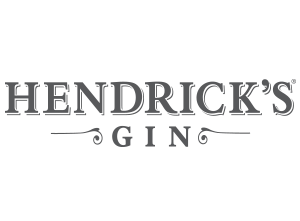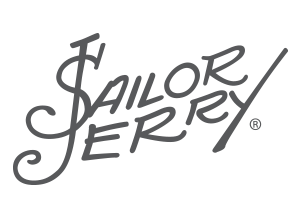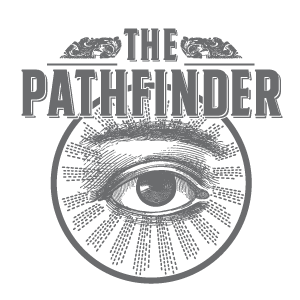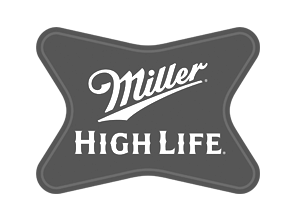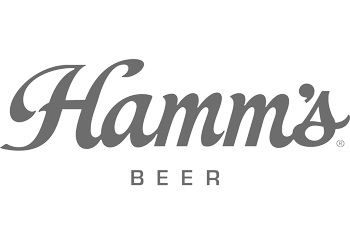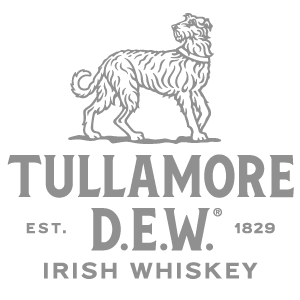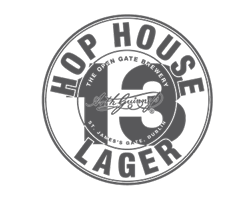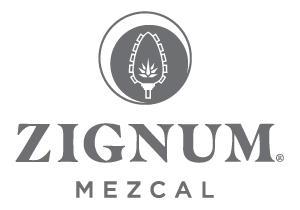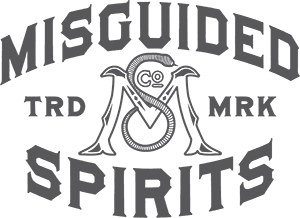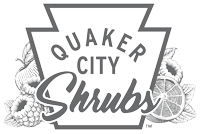Steven Grasse is profane, wildly successful and more than happy to sell you a $33 bottle of artisanal Durt. Is he a spirits genius? Writer Alex Halberstadt visits him at his forthcoming New Hampshire think tank.

Steven Grasse, the prolific ad man and spirits architect, doesn’t suffer from false modesty. In fact, he manages to make the whole notion of modesty seem kind of gauche. He’s a vision guy—he has people working for him who look after the details—and in the evening and afternoon I spent in his company, he cited, by way of inspiration and direct comparison, Henry David Thoreau, Ralph Waldo Emerson, J.R.R. Tolkien, Thomas Edison, Steve Jobs, Van Halen and Socrates.
Grasse is certainly ingenious—he has created a lineup of vividly packaged, daringly loopy beverages and made a great many people buy them. He conceived Sailor Jerry rum and Hendrick’s gin and turned them into worldwide brands, revitalized Narragansett beer, found an unlikely audience for a concoction called Spodee (“It’s basically port in a milk jug,” he explained), and over the past few years, introduced a line of spirits that root around in the distant American past for inspiration and cotton to no categories at all. He is building an ultra-modern distillery in Tamworth, New Hampshire, a part of the country not known for its distilleries, though he doesn’t plan to release any of the spirits made there for at least a year. “We can do that,” he told me a few minutes after we met, “because I have deep pockets.” Grasse’s gleeful bumptiousness and penchant for weird history have made the drinks business—with its dogma of authenticity and fussed-over tradition—appear a little dull.
He audaciously named his spirits company Art in the Age of Mechanical Reproduction, after an abstruse essay by the German-Jewish Marxist literary critic Walter Benjamin. When I asked how an 80-proof gingersnap beverage resonates with Benjamin’s meditation on the relationship between art and tyranny, he said, cheerfully, “Well, that’s my dum-dum interpretation.”
Grasse’s personality comprises parts that fit together uneasily. He lets on that his focus on intellectual history, organic farming and land stewardship is fairly recent. For decades prior, he devised oft-copied, sometimes outrageous ad campaigns animated by a punk aesthetic, and he’s devised a persona to match. The cover of Virus, a photographic history of his former advertising agency, Gyro Worldwide, depicts him sitting on the hood of a muscle car and raising a middle finger, fawned over by three hotties in short-shorts. For Grasse, being a contrarian sometimes entails under-selling, and even repudiating, his crackerjack intellect. When we met, he wasn’t shy about his successes—”Everything we’ve done has been a hit, basically,” he said—but proved harder to pin down on the vision thing. Variously, he described it as “girls, guns and rock ‘n’ roll,” and, more often, “I like stuff that doesn’t suck.”
While Grasse and his advertising company are based in Philadelphia, the Art in the Age spirits are made in Los Angeles. Distiller Melkon Khosrovian at the Greenbar Distillery concocts three versions of each spirit that Grasse conceives, then sends them East for Grasse to make the final pick. Released in 2009, Root is Grasse’s contemporary take on an herbal remedy of birch bark, smoked black tea and spices that Native Americans are said to have taught to the early colonists. It was known as root tea before the temperance movement and a keen Philadelphia pharmacist turned it into the mild, nonalcoholic drink we know as root beer. Other Art in the Age spirits mine Grasse’s personal history: Snap, infused with blackstrap molasses, cloves and ginger, is reminiscent of his Pennsylvania Dutch great-grandmother’s gingersnap recipe; Rhubarb evokes a tea his mother made. As for Sage, which tastes like an ultra-herbaceous gin, it’s based on Flora Americae, a compendium in which the 19th-century horticulturist Bernard McMahon, who was a gardening mentor to Thomas Jefferson, chronicled the continent’s vegetation. Sage includes angelica, dandelion, sumac and other indigenous botanicals. All four spirits taste uncommonly potent and complex, and all but Sage carry a fair amount of sweetness, making them a potential challenge in cocktail-mixing. Grasse contends they’re enjoyable straight—”We’ve done the mixology in the bottle,” he told me.
We were drinking coffee at the country store he opened in the center of town and dubbed the Tamworth Lyceum, after both the garden near Athens where Aristotle taught philosophy and the adult-education movement the Transcendentalists championed in the antebellum era. It is a chipper space filled with good beer and wine, local produce and the kind of upscale merchandise—hand-woven Turkish scarves, natty backpacks, assorted Americana—found more readily at shops in Brooklyn or San Francisco. Grasse was poring over blueprints for the distillery, which will be housed inside the skeleton of a defunct inn near the town center. Its future distiller—a watchful, slight 28-year-old named Jamie Oakes—sat beside him. The two met when Oakes worked as a barista in Philadelphia. Grasse heard that Oakes came from a town near Tamworth and wanted to return to the area; impressed with Oakes’s way with coffee, Grasse decided he had found his man and is sending him off to apprentice at distilleries in Kentucky and Scotland.
Grasse and Tamworth collided almost accidentally. He spotted an ad in the Wall Street Journal for a decidedly odd piece of property—a 14-room manse on 72 acres that included an outbuilding with a tatty taxidermy collection and a 19th-century bowling alley—and decided, pretty much on a whim, to buy it. He had sold his share of Sailor Jerry rum to William Grant & Sons for a sum that he let on was enticingly massive, had given up a lucrative cigarette account and was looking for a new project. The impetus for the Lyceum, he said, was simply having someplace nearby where he could buy his beer. “Then I got very philosophical,” Grasse said. He dreamed up the distillery, read about utopian communities and Thoreau. “If I thought about what I wanted to do big-picture,” he said, “this was the perfect town to go with it.”
The forthcoming Tamworth distillery promises to be a laboratory for testing some of his more out-there ideas about what people want to drink. There are plans to install a vodka column, a pot still for brown spirits and even equipment for distilling essential oils from locally sourced flora. He mentioned a spirit made with kale. When I voiced doubts about the appeal of a kale-flavored gin, he shrugged and said, “It may not work, but it will be a beautiful failure.” Grasse isn’t bluffing about the fearless, strange possibilities of his yet-unborn spirits. Consider the newest addition to the Art in the Age collection, out this winter. It’s called Durt. According to promotional copy that Grasse’s publicist sent me, it’s inspired by “resourceful Okies” of the 1930s who tossed stray vegetables and herbs into homemade stills, “preserving them and creating a unique infusion that was both practical and tasty.” If anyone can make a $33 bottle of liquor inspired by the economic calamities of the Dust Bowl seem like a viable idea, that person is probably Steven Grasse.
Grasse is compact, shiny-bald and slightly jug-eared, and he happens to be excitable, so at his most worked up he sometimes looks like a voracious toddler. He brimmed with eagerness about the distillery bringing family farmers back to the area; he plans to source grain, produce and even barrels locally, and to restore the town to the tourist destination it had been a century ago, when former president Grover Cleveland bought a summer place down the road from the country store. “We need something here besides waterslides and mini golf,” Grasse said. He spoke of spirits as a “farm-to-bottle” product—all of his Art in the Age spirits are USDA-certified organic. “Booze will save the earth,” he enthused. After a while, it became clear that for Grasse, a 49-year-old father of two, the project represents more than a business opportunity. For much of his career, he marketed Kamel Red cigarettes to young urban professionals on the coasts. His annual budget from the tobacco giant R.J. Reynolds topped out at $20 million. “Cigarettes were my livelihood,” he said. He saw the Lyceum, and especially the distillery, as a reboot. “It’s something to give to my children,” he said, “so they can say ‘my dad does this specific thing,’ instead of ‘my dad works in an office and is on planes all the time.’ ” Grudgingly, he added, “I want my kids to be proud of who I am.”
Grasse’s first taste of advertising came at his father’s printing company in Souderton, Pennsylvania, where he had to work during summers while he was in high school. “The only part of the place that appealed to me was the art department,” Grasse told me. He played bass in a local punk band called Hair Club for Men and made flyers for the shows on his father’s printers. The first inkling of his calling came from a journalism teacher. “Your band sucks,” he told Grasse, “but you’re great at promoting it.” Grasse enrolled at Syracuse University, then took a year off to live as an exchange student with the family of a ruby-mine owner near the Thai-Cambodian border; when he walked through the jungle, he sometimes heard the gunshots of the Khmer Rouge. By the time he was 23 and starting his own agency in a former bank building in the Society Hill section of Philadelphia, he had already worked at a handful of the world’s largest advertising agencies in New Zealand and Hong Kong. He optimistically named his agency Gyro Worldwide and began to design campaigns for clients like Comcast and Blue Cross.
Nearly every client fired Grasse after his posters for a local punk-clothing shop named Zipperhead, featuring images of Jeffrey Dahmer and Charles Manson, appeared around Philadelphia. The slogan read, “Go a little crazy now instead of a lot crazy later.” Protesters appeared in front of his agency and the New York Times covered the flap in its Style section. Coca-Cola and Budweiser got wind of the ad and called, soon replacing the smaller, more cautious clients. The experience, said Grasse, taught him to trust his hunches, no matter how outrageous they sounded.
Grasse made a habit of sending unsolicited letters to CEOs, savaging their advertising campaigns and products; the executives often asked him for a meeting. He directed a series of short films about buxom coeds with large-caliber firearms, called Bikini Bandits, who knock over convenience stores, and he flirted for a time with being a feature-film director. Grasse’s favorite story from that period concerns an abortive photo shoot he directed for a Kamel Menthe campaign in Los Angeles. “We got helicopters and models and brought in Steve McQueen’s son as a consultant. It was like the video for [the Beastie Boys’] ‘Sabotage,’ but with lots of guns, violence and smoking. We spent a million dollars before the CEO took a look at the photos and said, ‘What the hell are you doing?’ ”
Grasse’s entrée into spirits came when William Grant & Sons, the makers of Glenfiddich, approached him to develop a gin and a rum for their portfolio. He came back with Hendrick’s—an unlikely and novel gin that combines the traditional juniper berries with an oddly appealing mix of cucumber and rose petals. He convinced William Grant to distill a spiced rum for a project of his called Sailor Jerry, a clothing line based on the art of tattoo icon Norman Collins. “I wanted to make something for an average Joe in Philly,” Grasse told me. The manager of the Sailor Jerry store had connections in the music world and gave away cases of the rum to bands who passed through town, like Social Distortion and the New York Dolls. “Bands are selling you a lifestyle, and the rum is part of that lifestyle,” said Grasse. Long after the clothing line faded, the rum had developed a following; these days, nearly a million cases of Sailor Jerry are sold in several dozen countries.
That experience reinforced two insights that Grasse laid out for me, namely that 1) It’s more efficient to have people seek out a product by making it seem desirable and exclusive than to foist it upon them with ads, and 2) It’s crucial to pinpoint a product’s intended audience. “Think in terms of people you know,” he said. “Tribes transcend borders and work internationally.” He fired up a PowerPoint presentation he shows to prospective clients; each of his spirits brands flashed a slogan describing its ideal consumer. Sailor Jerry rum was aimed squarely at the Old School American Rebel. For Art in the Age, Grasse targeted Enlightened Urban Agri-Bohemians. “That’s hipsters who like farming,” he explained.
New Englanders can be a chary bunch, and in the beginning, some Tamworth locals didn’t warm to Grasse or his arriviste plans for their community. “Some folks here didn’t know what to make of Steven’s store at first,” said Dale Bragdon, who runs the Highland House bed-and-breakfast in Tamworth and manages The Barnstormers, a local theater company. “But even some of them have come around.” Grasse offered free meeting space at the Lyceum to various organizations, threw a Fourth of July barbecue for the town and made a crucial ally in George Cleveland, a local celebrity of sorts who happens to be the former president’s grandson. I had coffee with Cleveland at the Lyceum; he runs a charitable organization nearby, moonlights as a lecturer on American history and unnervingly resembles his grandfather. Cleveland talked about locals returning to the area to farm family land, about the revitalized Saturday farmers’ market and about the distillery’s potential to bring more visitors and newfound revenue to Tamworth. Grasse sat beside him, beaming, with the look of a man who had wooed an important tribal chief to his cause.
“Tamworth is my Fitzcarraldo,” Grasse said, referring to the Werner Herzog film in which an Irish rubber baron tries to pull a steamship over a mountain in Peru. We were standing in a weedy field behind the future distillery. The air smelled like wood smoke and the White Mountains poked up over the trees. He showed me the spot where the tasting room will be, and we walked over to the barn that will serve as a barrelhouse—after he moves the building a few yards to a more suitable location. “I’m not a spirits connoisseur or cocktail geek or foodie,” he said, “but I suppose I bring a certain joyful naiveté.” He told me he had to prepare for a TED talk he was giving on the New England Transcendentalists and headed for his Jeep. He paused for a moment in front of the derelict wooden shell of the building. “My piece of crap,” Grasse said happily, then climbed up into the driver’s seat and pulled away.
Alex Halberstadt has written for the New Yorker and the New York Times Magazine. He’s working on a family memoir called Young Heroes of the Soviet Union.
Steven Grasse’s Drink Biography
Sailor Jerry Spiced Rum ($20)
This spiced rum, inspired by iconic tattoo artist Norman Collins, was Grasse’s first foray into spirits. “I wanted to make something for an average Joe in Philly,” Grasse says.
Hendrick’s Gin ($35)
Grasse helped conceive of a whole new style of gin with this aromatic, rose- and-cucumber-infused one. Since he launched it in 1999, Hendrick’s has developed a cult following the world over.
Narragansett Beer
In 2009, Grasse invested in this defunct yet iconic 120-year-old Rhode Island brewery. He has revived the brand with throwback tall-boy cans and a major presence in New England.
Art in the Age Root ($33)
Grasse’s fascination with history led him to the recipe for this root-beer-flavored spirit, his first for the Art in the Age label. It’s delicious stirred into soda water with a scoop of ice cream.
See full article here: http://www.foodandwine.com/articles/steven-grasse-punk-rock-prince-of-small-batch-spirits
